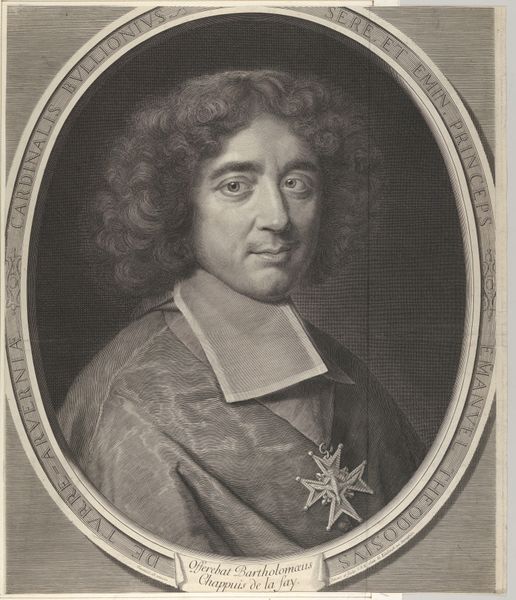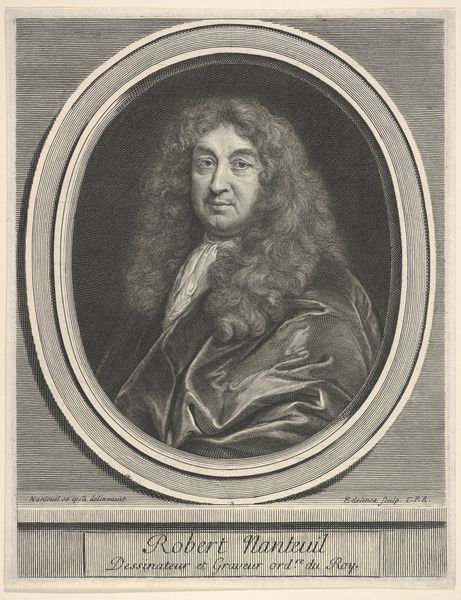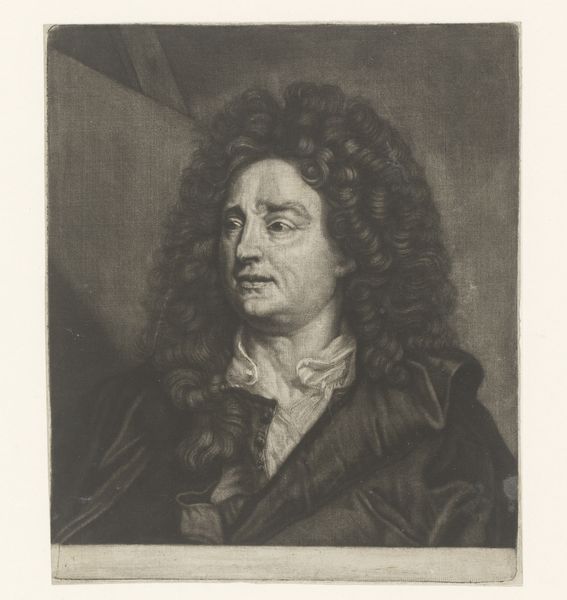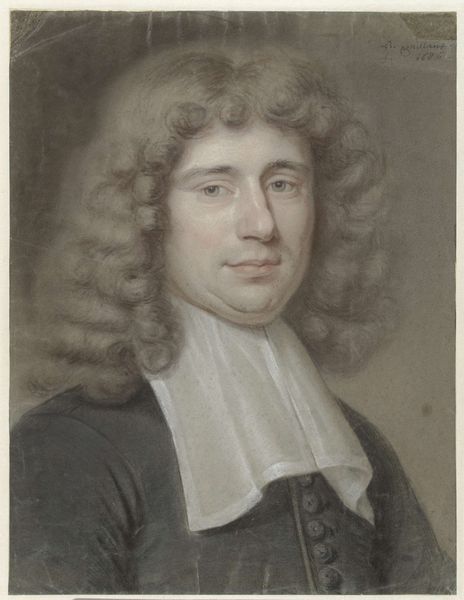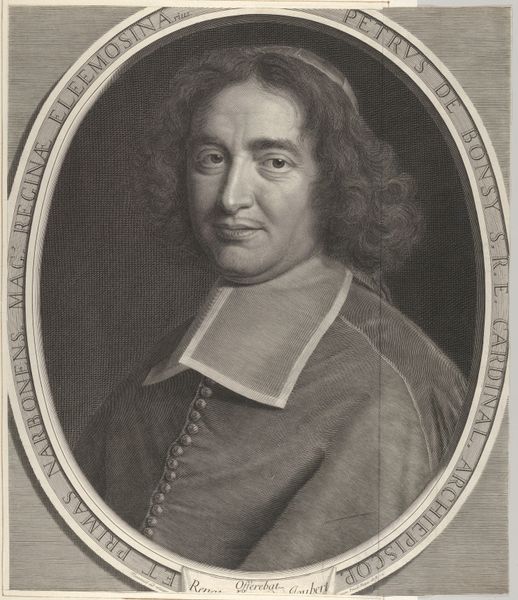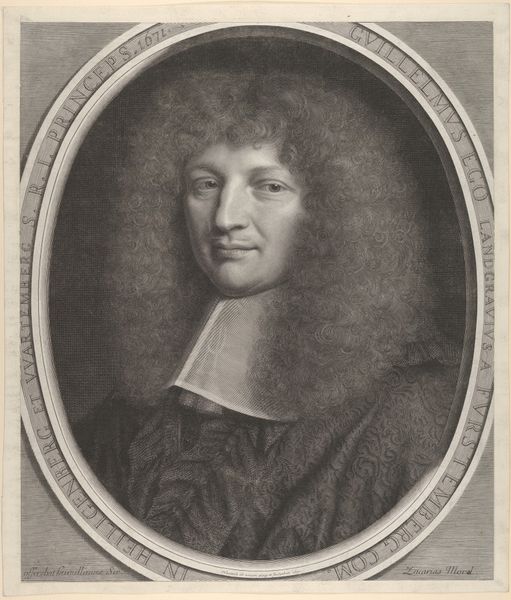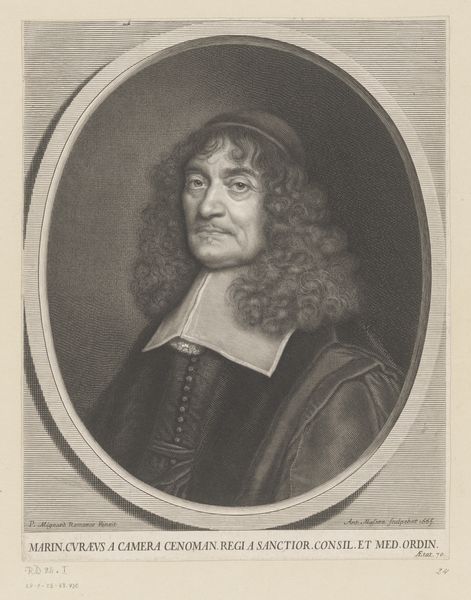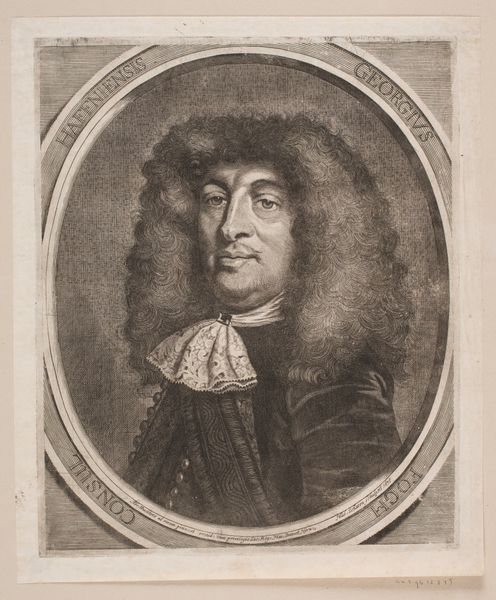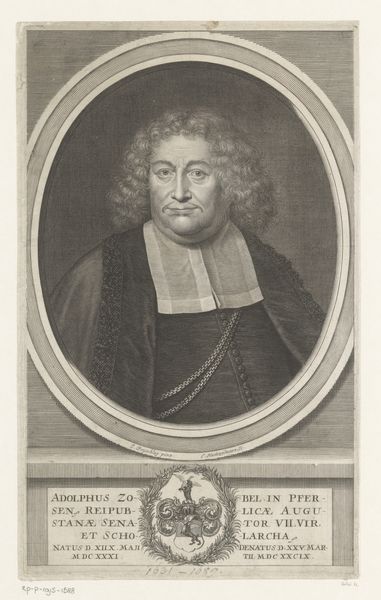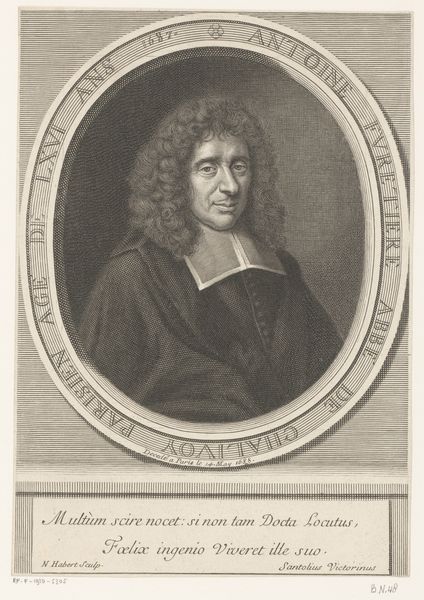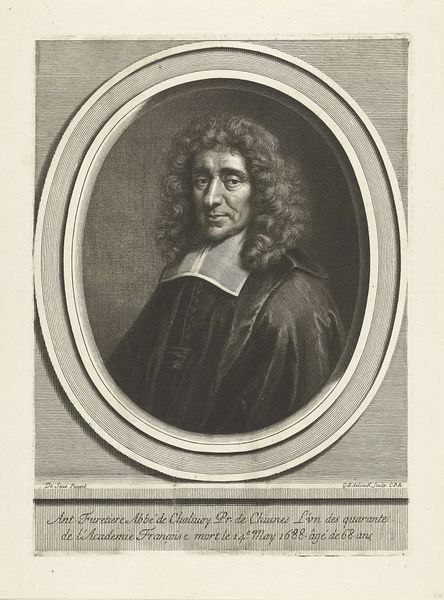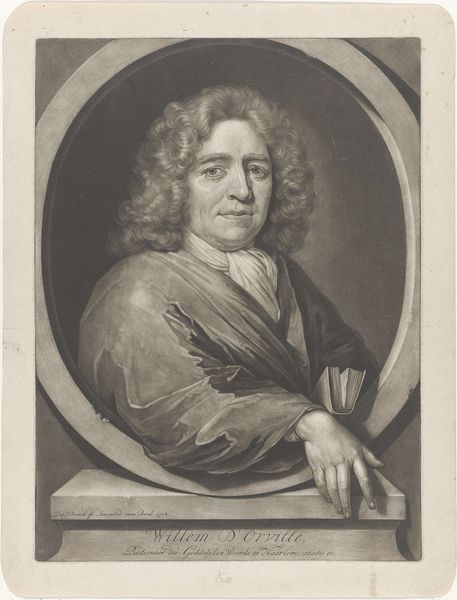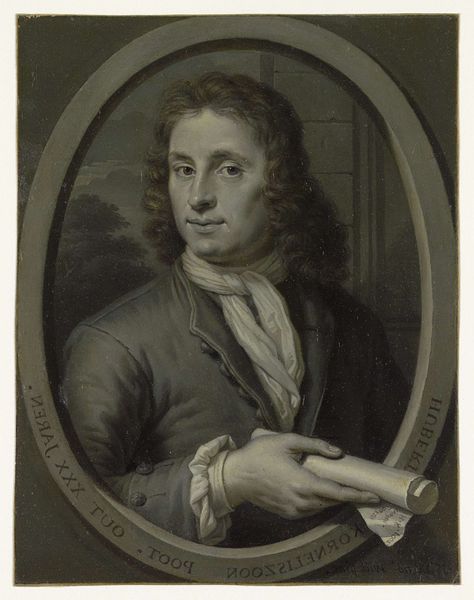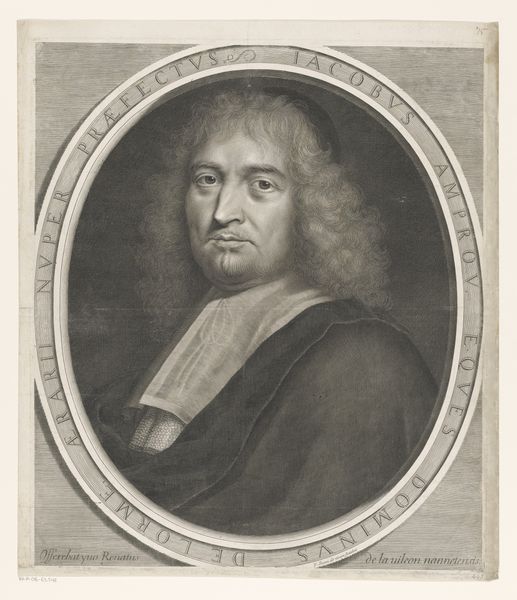
drawing, print
#
portrait
#
drawing
#
neoclacissism
#
facial expression drawing
#
photo restoration
#
portrait image
# print
#
portrait reference
#
portrait head and shoulder
#
yellow element
#
animal drawing portrait
#
portrait drawing
#
portrait art
#
fine art portrait
Dimensions: height 395 mm, width 311 mm
Copyright: Rijks Museum: Open Domain
Editor: This is Pierre Charles Coqueret's 1814 portrait of Jean de La Fontaine, rendered as a print. The detail in his face and hair is quite striking. How do you interpret this work within its historical context? Curator: It's fascinating to consider this Neoclassical portrait as more than just an image of La Fontaine. Think about who La Fontaine was – a fabulist, critiquing society through animal tales. And here he is, decades after his death, rendered in this very formal, almost Roman style. Doesn’t it feel like an attempt to legitimize, even sanitize, a figure who was, in his own time, quite subversive? Editor: That's interesting. I hadn’t thought about the tension between his fables and this formal depiction. Was Neoclassicism often used this way, to "tame" rebellious figures? Curator: Precisely! Neoclassicism, with its emphasis on order and reason, served as a powerful tool for constructing narratives. How do you think Coqueret, creating this image during the rise of Napoleon, might have used the portrait to evoke stability through idealized, classical portraiture and subject? Could it even speak to a longing for order after years of revolution? Editor: So it's less about La Fontaine the individual, and more about what he represents within a specific political moment. Curator: Exactly. And notice how the softness of the drawing contrasts with the rigidity often associated with Neoclassicism, hinting at the complexity of La Fontaine's legacy. The softness of the artistic medium stands in direct opposition to the political symbolism and legacy which the artistic style conveys. It allows us to re-think this subject and others! Editor: That’s given me a whole new perspective on portraiture. I was just thinking about it as a likeness, but it's really a statement. Curator: Indeed, a powerful statement about identity, history, and the ever-shifting sands of political interpretation.
Comments
No comments
Be the first to comment and join the conversation on the ultimate creative platform.
